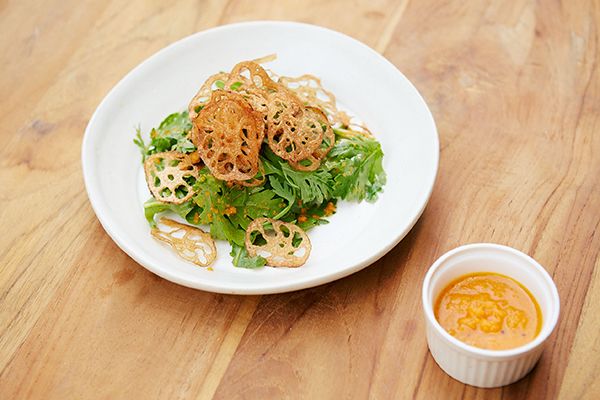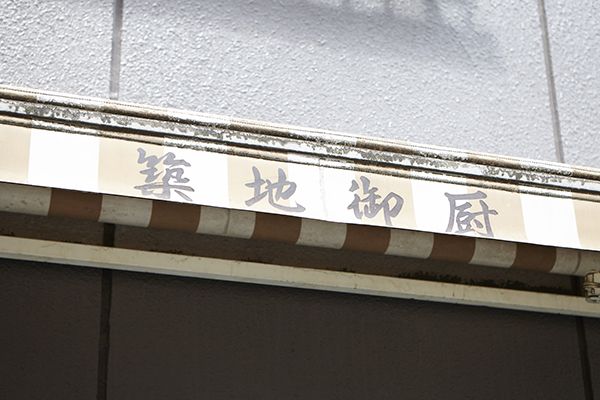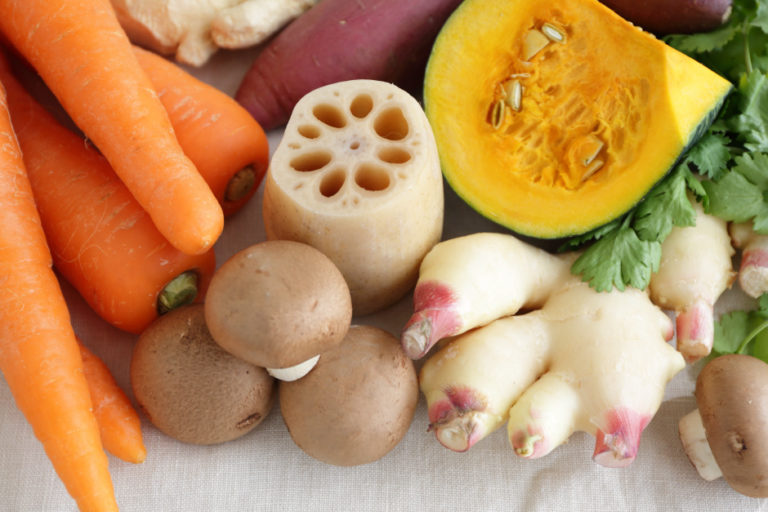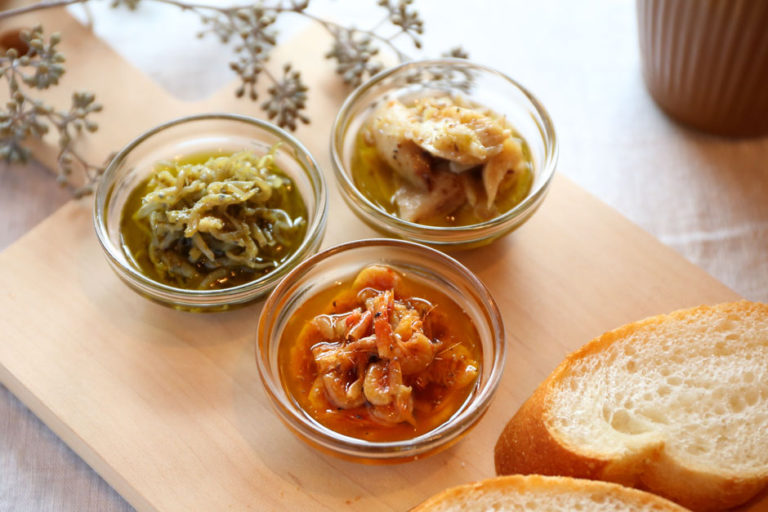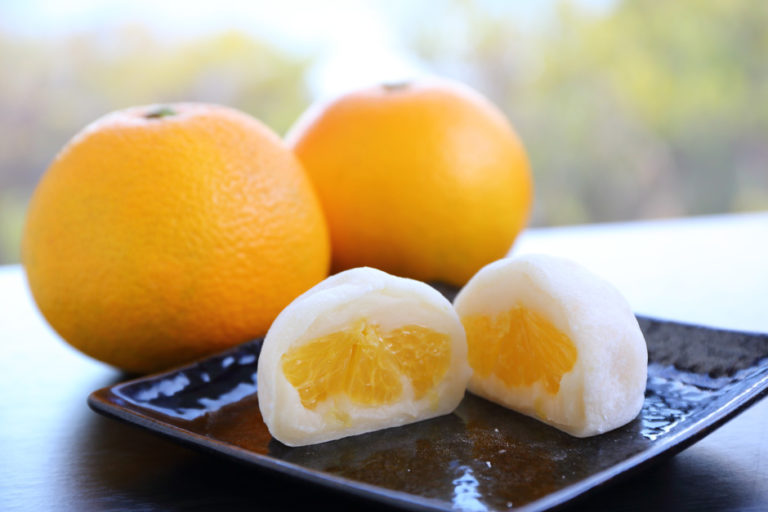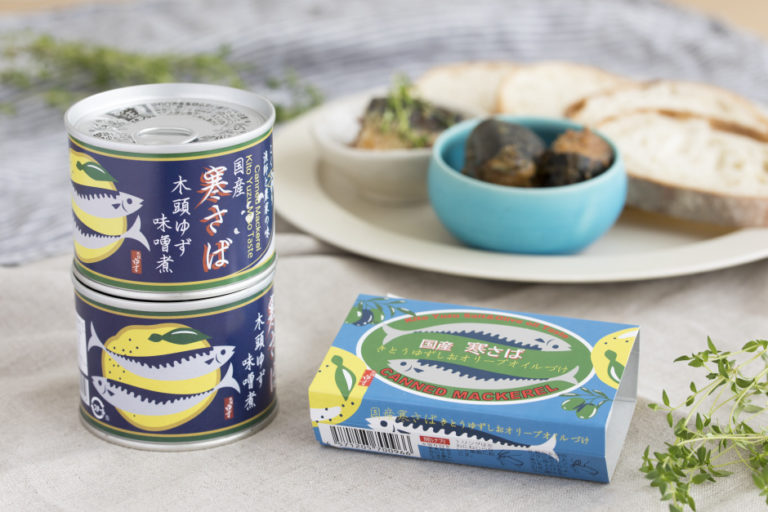Renkon
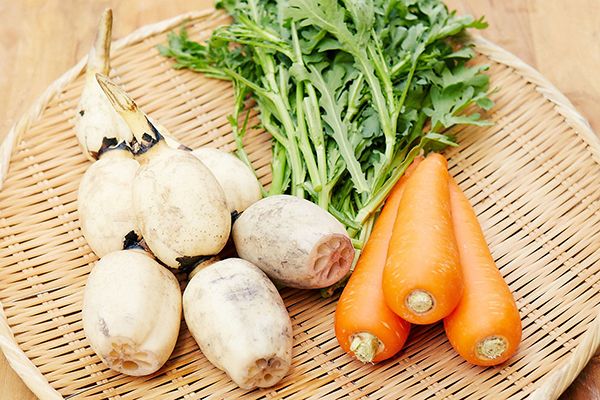
Look for the holes
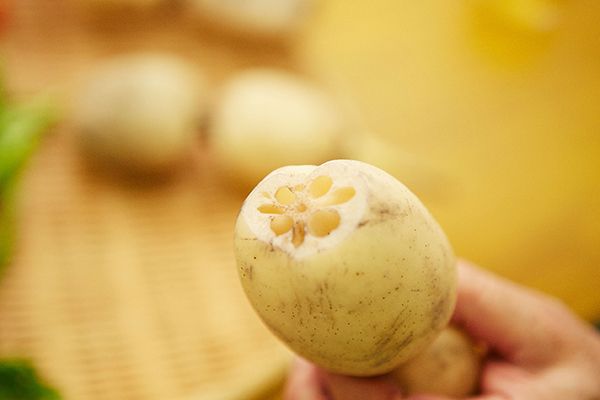
Renkon, the engorged underground stem of the lotus plant, grows best in swampy country.
Renkon is often translated as “lotus” in English, which means eight. True to its name, the renkon normally has eight or nine holes that are used to transport water to the surface. The holes are a good indicator of healthy growth and boast a unique configuration including smaller holes in the middle for respiration. Renkon grows best in muddy ground, where air is captured by the lotus flowers on the surface and funneled down to the root below.
There are many theories on the origin of the renkon. Some observers believe it came from China, others say Egypt. The traditional variant from Japan is known as Bichu Renkon after the Bichu region, and is produced only in limited volumes.
“Renkon is often seen in dishes prepared at festivals and celebrations, such as the traditional osechi-ryori banquet,” notes Uchida. “The holes are regarded as an omen of good fortune because of the way you can see right the way through.”
Choosing the best renkon
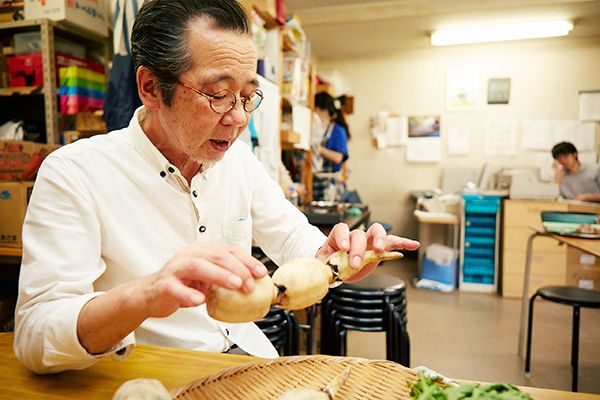
Renkon is classified into parent, child and grandchild by order of growth. Size and taste varies depending on the particular section of the plant, so it is important to choose a renkon with all the sections intact. Uchida explains the key criteria for identifying the best renkon.
・ Plump, rounded body
・ Eight holes spaced evenly in a circle is evidence of healthy growth
According to Uchida, there are several common characteristics common to seasonal vegetables grown in their natural environment. Let us consider here the eight key criteria for judging vegetables.
Uchida's 8 Points For Vegetables
 Shape: Choose rounder vegetables.
Shape: Choose rounder vegetables. Size:It does not have to be large, but it should have weight.
Size:It does not have to be large, but it should have weight. Color:Light green is key.
Color:Light green is key. Balance:The shape and veins of the leaves should be even on the left and right sides.
Balance:The shape and veins of the leaves should be even on the left and right sides. Axis:Look for a smaller axis that is well centered on the vegetable.
Axis:Look for a smaller axis that is well centered on the vegetable. Fibers:The fibers should run straight up and down.
Fibers:The fibers should run straight up and down. Bud/Seed Bed:This is the sign of good vitality. Check seeds, buds, and seed bed numbers.
Bud/Seed Bed:This is the sign of good vitality. Check seeds, buds, and seed bed numbers. Choose vegetables that wither, not rot.
Choose vegetables that wither, not rot.
Early, prime and late season renkon recipes
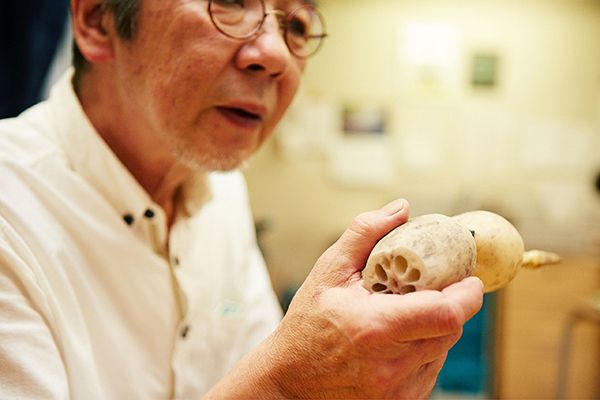
Vegetables taste best when in season because they are in peak physical form.
The autumn renkon season from September through November is divided into three sub-seasons: early, prime and late. The way the renkon is prepared, particularly the method of cutting up and cooking, varies depending on the sub-season.
- Early Season
- Early season renkon is still growing when harvested. It is younger and fresher, with fine, soft fibers, and has a crunchy texture. Early season renkon is best in dishes where the moisture content is removed quickly, such as kinpira, where the renkon is cut vertically into strips and stir-fried, and subasu (renkon in vinegar).
- Prime Season
- Prime season renkon is more versatile and can be prepared in any number of ways. Renkon chips are always popular, being simple to prepare and visually striking, thanks to the unique appearance of the renkon. Renkon chips can be used to add a dash of texture to salads. We’ll give you a recipe to try out at home.
- Late Season
- Late season renkon is characterized by taut skin and larger fibers, and needs to be softened by cooking gently for some time.
Sliced renkon tempura is a popular use for late season renkon. Uchida has devised a recipe of renkon fry served with mashed potato spiced with karashi (mustard). Late season renkon can also be chopped roughly and added to stews, where it adds a soft but firm texture.
Renkon is the snack that kids love
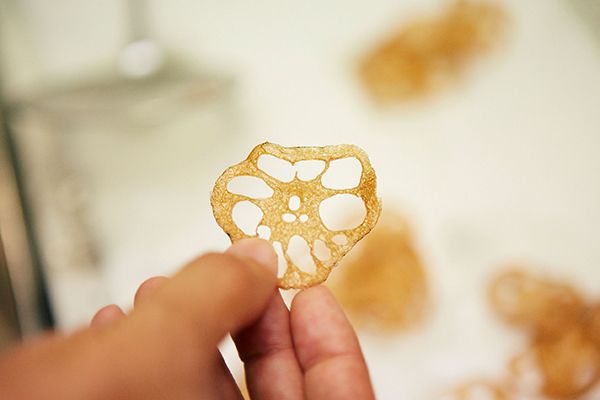
Renkon chips are the ultimate easy-to-prepare health snack, made from a single ingredient with a taste that’s pure and unadulterated. They’re great for a quick bite and perfect to munch on with drinks. Uchida recommends them as a snack for the kids.
“Mum, what’s this?”
“It’s called renkon. See how it’s got eight holes for the water to go through?”
Seasonal vegetables can be a great learning tool. A question like this from your child always brings a smile to your face. It’s little things like this that help to build up a child’s knowledge and understanding of the world, promoting both mental and physical growth.

